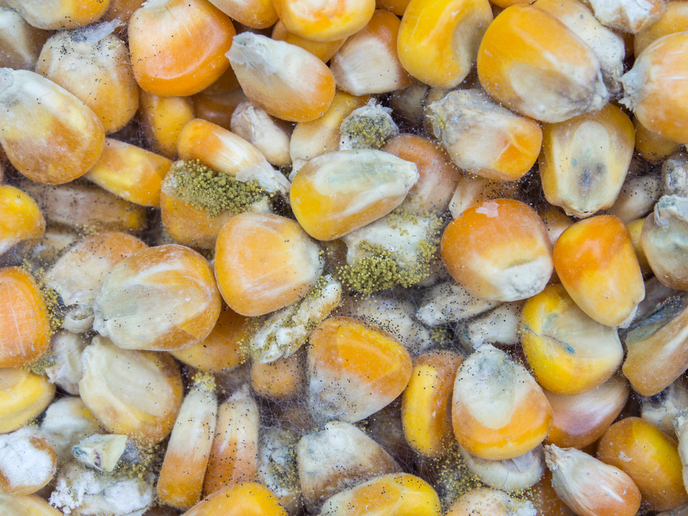Cereal losses? A smart toolbox to safeguard the food chain
Mycotoxins, toxic compounds produced by different types of fungus, continue to be a major concern globally. Moulds that can produce mycotoxins grow on various foodstuffs such as cereals, dried fruits, nuts and spices, often under warm and humid conditions. They pose a threat to human and animal health, and also lead to huge agricultural and industrial losses every year. The adverse effects of these food-borne substances range from acute poisoning to immune deficiency to cancer. Effective mycotoxin mitigation strategies are crucial for food and feed security and safety, as well as economic sustainability. The EU-funded MyToolBox project aims to deliver just that, with its potential to save tens of millions of euro annually in reduced crop losses and decreased dietary exposure to mycotoxins. A news article summarises the major achievements of the project since its launch in 2016: “A massive reduction in the mycotoxin load in DDGS [distillers’ dried grains with solubles], sensor led indication of toxin contamination of grains in silos as well as greatly enhanced biocontrol of aflatoxin development in the field.” Alternative use of contaminated crops In a video posted in the same article, project coordinator Prof. Rudolf Krska says the MyToolBox team pursues a field-to-fork approach, “but beyond that we also consider safe use options for contaminated batches,” he adds. Prof. Krska also notes that in collaboration with project partner BIOMIN Holding GmbH, the team has been able to reduce the high occurrence of mycotoxins in the production of biofuels and fermentation by-products such as DDGS used in livestock feed. The article points out that “[w]ithin the byproducts of bioethanol production, DDGS represent a valuable feed ingredient, particularly replacing expensive protein feed at a competitive price for industry and farmers.” As a result of mycotoxin-free, higher-quality DDGS, there could be a revenue boost for the bioethanol industry. Livestock producers could see animal health and performance improvements, according to Prof. Krska. Early warning As for silo management, project partners have produced sensors that measure temperature, humidity and CO2 that could be used – together with models developed by Cranfield University – to predict infection by fungi in the grain silos. This could provide “silo managers an early warning system about potentially elevated levels of mycotoxins,” the article adds. The ongoing MyToolBox (Safe Food and Feed through an Integrated ToolBox for Mycotoxin Management) project was set up to develop pre- and post-harvest measures for the reduction of mycotoxin contamination along the entire food and feed chain in a web-based platform. It focuses on small grain cereals, maize, peanuts and dried figs that are relevant to agricultural conditions in the EU and China. A leaflet on the project website states that initially, “the tool is being developed to provide pre-harvest advice to the farmer, and progressively the tool will be extended to provide interactive advice for grain storage, and then advice on novel milling techniques to minimize transfer of mycotoxins to human food.” For more information, please see: MyToolBox project website
Countries
Austria

